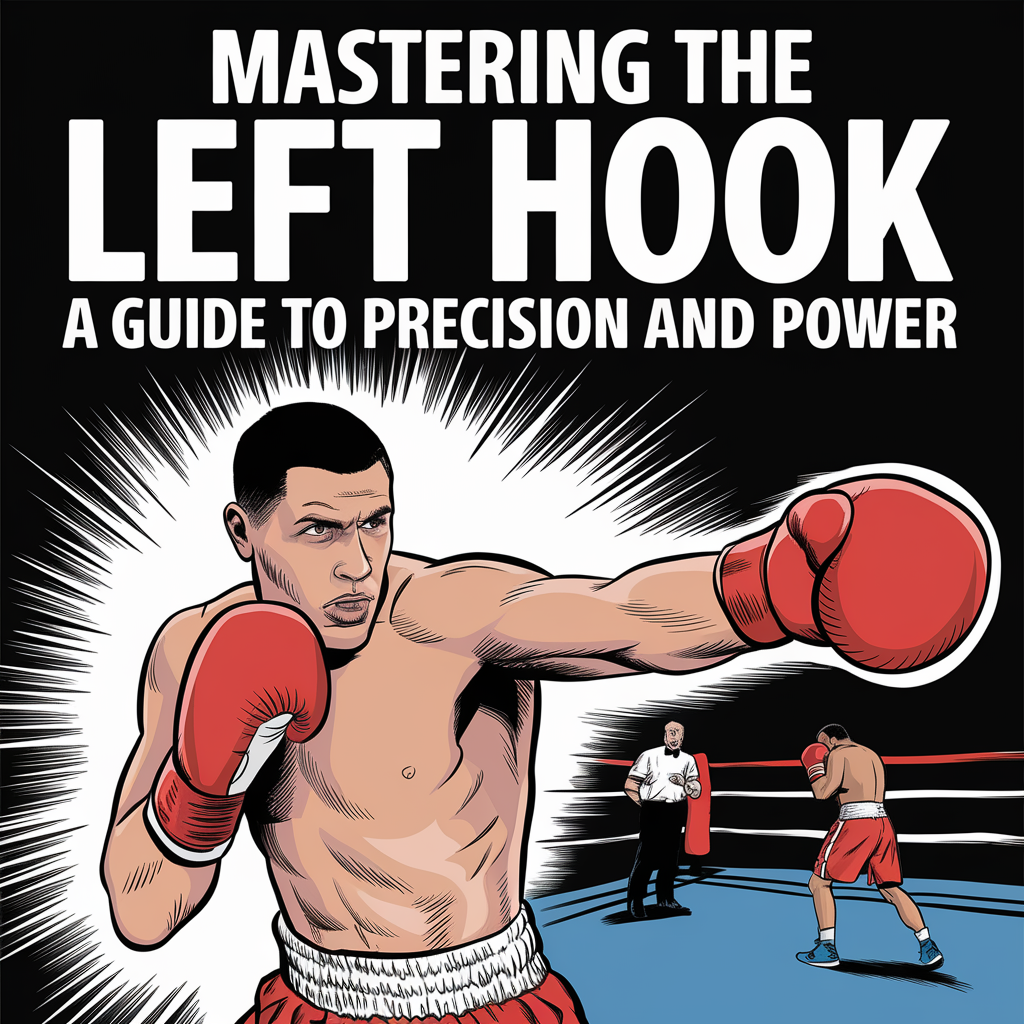
Boxing isn’t just about brute strength; it’s a dance of strategy, technique, and precision. Among the various punches in a boxer’s arsenal, the left hook stands out. It’s not merely a punch; it’s a statement. When executed correctly, a left hook can be the defining moment in a match, capable of knocking an opponent off their feet.
Why Should Every Man Learn the Left Hook?
Because the left hook is one of the most explosive, fight-changing punches there is — and most guys throw it sloppy.
It’s fast. It’s sharp. It comes from the blind side. And when it’s done right, it’s devastating. You don’t have to be a pro boxer to learn it — just a man who wants to carry himself with skill and confidence.
Even if you never step in a ring, mastering the left hook builds more than technique — it builds discipline, control, and physical awareness.
What’s the Proper Technique for Throwing a Left Hook?
This isn’t just “swing and hope.” The best left hooks come from tight rotation and clean mechanics. Here’s how I break it down:
- Stance – Stay in your fight stance: feet shoulder-width, lead foot slightly forward.
- Pivot – Rotate your lead foot (ball of the foot) while turning your hip and shoulder.
- Elbow up – Keep it level with your fist as you hook.
- Fist tight – Thumb on top or facing you, depending on target.
- Snap, don’t swing – You’re not launching a haymaker — you’re snapping power from torque, not muscle.
Practice slow. Nail the form. Then add speed and pop.
How Do You Build Real Power Into Your Hook?
Power doesn’t come from just arm strength. It’s a chain — from your legs, through your core, into your fist.
- Use resistance bands or shadowboxing with light weights
- Focus on rotational core strength — Russian twists, medicine ball throws
- Practice the “snap” — explosive, controlled release, not a wild swing
Precision + rotation = power. Not brute force.
What Are Common Mistakes Guys Make With the Left Hook?
- Overextending – You don’t reach for the punch. You rotate into it.
- Dropping your hand after – That’s how you get caught. Always reset.
- Too wide – A hook should be tight and fast. Not a looping haymaker.
- Telegraphing – If your shoulder winds up, you’re too obvious.
Clean form beats raw power every time. If you want to look and move sharper in everyday life too, check out Navigating Life’s Journey: For Men Without Dads — especially if you’re building yourself from scratch like a lot of us are.
How Do You Practice the Left Hook Without a Gym?
You don’t need a fancy setup. Here’s what I used starting out:
- Mirror work — Shadowbox slow, then fast, while watching your form
- Pillow on the wall — Cheap target to work accuracy
- Resistance bands — Great for control and return movement
- Heavy bag or water bag — If you’ve got space, it’s worth it
Consistency beats gear. Throw 100 perfect hooks a day in your garage and you’ll be better than most.
What’s the Mental Game Behind the Left Hook?
It’s about control. Timing. Precision.
Throwing a perfect left hook is less about knocking someone out and more about knowing you could — and choosing when to use it.
That’s what separates a brawler from a man of skill.

The left hook is more than just a swing of the arm. It’s a combination of footwork, hip rotation, and the snap of the wrist. While it might seem simple, the intricacies involved in delivering a perfect left hook are vast. Aimed at the head, it can daze and disorient, while a well-placed hook to the body, especially the kidneys or liver, can be debilitating.
For those who are left-handed or ‘southpaws,’ the mechanics of the punch can be adapted to their dominant hand. And while the left hook is a powerful tool on its own, it’s even more effective when combined with a repertoire of jabs, uppercuts, and straight punches.
In the world of boxing, and indeed in life, it’s essential to have a diverse skill set. The left hook, with its blend of raw power and finesse, embodies this principle. It’s not just about throwing a punch; it’s about understanding the rhythm, the movement, and the moment.
For those eager to delve deeper into the world of boxing and refine their technique, there are numerous resources and guides available. The journey to mastering the left hook is one of dedication, practice, and understanding. It’s not just a punch; it’s an art.
The left hook is not just about the arm’s motion. It’s a symphony of various body parts working in harmony. Here’s a breakdown:
- Stance and Footwork: Begin with a solid stance. Your feet should be shoulder-width apart, providing balance and stability. The power of the hook doesn’t just come from the arm or the shoulder; it’s driven by the legs and the torque of the body. As you prepare to throw the hook, pivot on the ball of your lead foot. This pivot is crucial as it generates the force needed for a powerful punch.
- Hip Rotation: As you pivot your foot, your hip should rotate in the same direction. Think of your torso as a coiled spring. The rotation of the hip releases this tension, channeling the energy upwards through your body and into your fist.
- Arm Position: Your elbow should be bent at a 90-degree angle, and your fist should be at head level. Ensure your thumb is facing you, and your knuckles are aligned with the direction of the punch.
- Execution: With your body coiled and ready, unleash the hook. The motion should be swift and fluid. As you connect, your knuckles should make contact with the target, and your wrist should be straight, ensuring maximum impact and minimizing the risk of injury.
- Defense: Always remember, every offensive move in boxing opens you up to a counter from your opponent. As you throw your hook, keep your opposite hand up, guarding your face and body.
- Recovery: After delivering the hook, return to your starting stance as quickly as possible. This not only prepares you for your next move but also ensures you’re in a defensive position if your opponent counterattacks.
Practice Makes Perfect
Like any skill, mastering the left hook requires consistent practice. Work with a trainer, use a punching bag, or shadow box in front of a mirror. Pay attention to your form, your footwork, and your hip rotation. Over time, muscle memory will set in, and the left hook will become a natural, fluid motion.
In the boxing ring, as in life, success often comes down to preparation, understanding, and the will to keep improving. The left hook is more than just a punch; it’s a testament to a boxer’s dedication, skill, and passion for the sport.
As an Amazon Associate we earn from qualifying purchases through some links in our articles.




